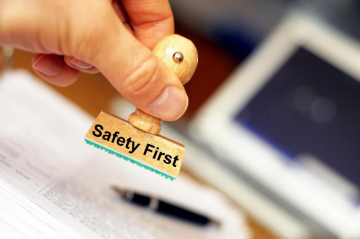Organizations are increasingly working to extend their H&S programs to include a much more holistic view of “health,” one which takes seriously employee mental health and wellness.
Whether driven by employee expectations, evolving regulations, or company culture, organizations are increasingly working to extend their H&S programs to include a much more holistic view of “health,” one which takes seriously employee mental health and wellness. However, exactly how best to do so in a way that is scalable (and not invasive) is still a question without a definitive answer.
At the 2019 NAEM EHS&S Management Forum, two organizations were brave enough to present a deep dive of their near miss and incident data, which uncovered that 2/3 of incidents had their root cause in employee mental health. Stresses outside of work can include family, finances, health, and more, and equipping and supporting employees in handling those stresses in a healthy way can have significant benefits for individuals and the business alike.
Taking a Global Approach
When trying to navigate the practicalities of building out a mental health support program, it can be helpful to look at Europe and South America for some guidance. We’ve already seen some of these practices codified into law in those regions and expect that trend to continue and expand across the globe in the coming years.
In the EU and most South American countries, for example, managing psychosocial stress (e.g., pace of work, length of shift, response to customers, clarity of reporting structure, etc.) and providing controls to mitigate them must be done just like any traditional occupational physical risk. Often this is done via employee questionnaires regarding job conditions and stress levels (both job-related and personal) that are customized to the organization and its employee demographics as a joint effort between EHS and HR. During this process, it is crucial to build and maintain employee trust and help them understand that your intention is to build a more complete health and safety program that supports their holistic well-being, rather than just the absence of injury.
Once surveys are complete, the EHS leadership (which may be a set team and/or part of your company’s Safety Committee responsibilities) must analyze the risk profile and determine what mitigation steps can be taken. One practical way to do this is to focus on the gap between an identified mental health need and applicable support services, serving as a connection point between employees and support services rather than trying to address all employee needs directly. It is also important to ensure your organization is prepared to address confidentiality issues that may arise, including maintaining compliance with the recent EU General Data Protection Regulation (GDPR) legislation.
Antea Group’s Mental Health Support Program: A Case Study
As regulations and best practices concerning mental health support continue to evolve, it’s important to stay current with what other companies are doing, learning from and adapting their processes for your organization’s needs.
At Antea Group, our program stemmed from a recognized a gap in mental health resources--when our HR team reviewed aggregate health data, we saw that prescriptions and medical treatments were being used to address mental health concerns, yet our Employee Assistance Program (EAP) was getting less than 2% usage. Our hypothesis was that employees were seeking medical care and prescriptions to treat mental health symptoms but didn’t have the tools and resources available to help them address the underlying issues.
We gathered feedback on why the traditional EAP wasn’t being utilized and found that the accessibility of mental health resources was a challenge—sometimes finding a provider who was a good fit and had availability took weeks or months, and the EAP along didn’t offer continuity or ongoing coaching. And with our employees’ busy travel schedules, they couldn’t always commit to an in-person meeting weeks in the future. We found out that this issue was not unique to our firm – our benefits brokers told us they were seeing similar EAP usage rates at other organizations they support.
In light of this information, our challenge was clear—to find a way to support our employees’ mental health needs in a way that worked for their lives and schedules. We needed a resource that would offer on-demand access and coaching to help employees address the issues they were facing. Our search led us to partner with Learn to Live, an online cognitive behavioral therapy-based program, which has proven to be as effective as in-person counseling.
Learn to Live offers four programs: Social Anxiety; Depression; Insomnia; and Stress, Anxiety, and Worry. Employees take an online assessment and are directed to the program that best suits their needs. The program is available online 24/7 and also features a live coaching option for employees and their families. As a firm, we have heavily promoted these tools as part of our overall wellness program, not just for use when someone is facing a mental health issue.
We have seen excellent participation levels, and the program has had the added benefit of helping our firm normalize talking about mental health, removing some of the stigma and providing people with resources rather than shame and silence. As Chief People Officer Rosanna Ouellette-Pesicka explains, “It’s been extremely rewarding to see our employees utilize this amazing program and gain the skills to better address what life throws at us.”
Be Well, Stay Well
While what worked for Antea Group may not work for your organization, the important thing is to actively engage with the issue of supporting employee mental health, keep your organization’s specific needs in mind, be collaborative, and keep iterating and looking for new ways to improve.
When companies take the time to thoughtfully support employee mental health, everyone wins. Besides marked gains in employee wellness, reduced injuries and incidents, and increased productivity, building a culture that speaks freely about mental health, and where employees know they have resources available to them, can make a world of difference.
Want more news and insights like this?
Sign up for our monthly e-newsletter, The New Leaf. Our goal is to keep you updated, educated and even a bit entertained as it relates to all things EHS and sustainability.
Get e-NewsletterHave any questions?
Contact us to discuss your environment, health, safety and sustainability needs today.




